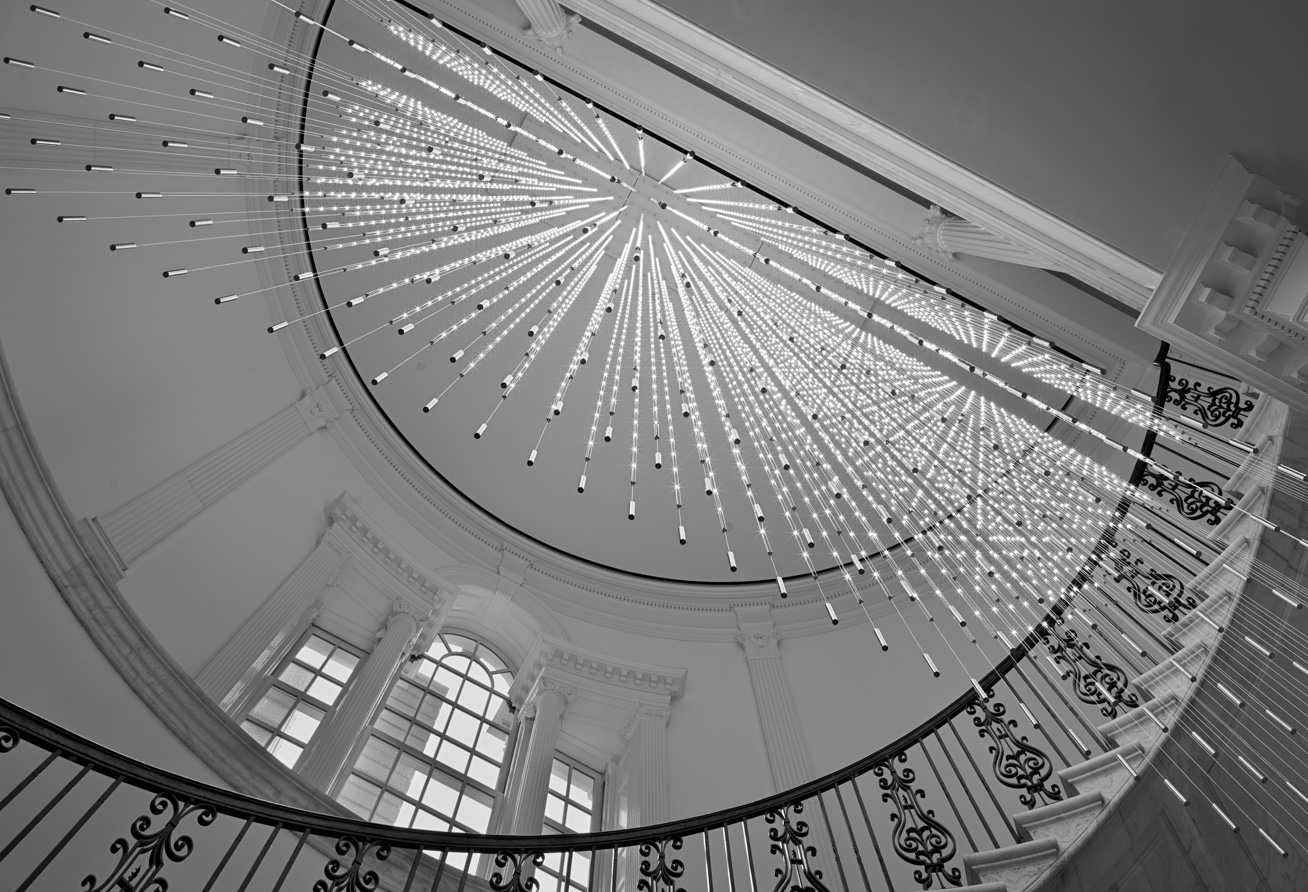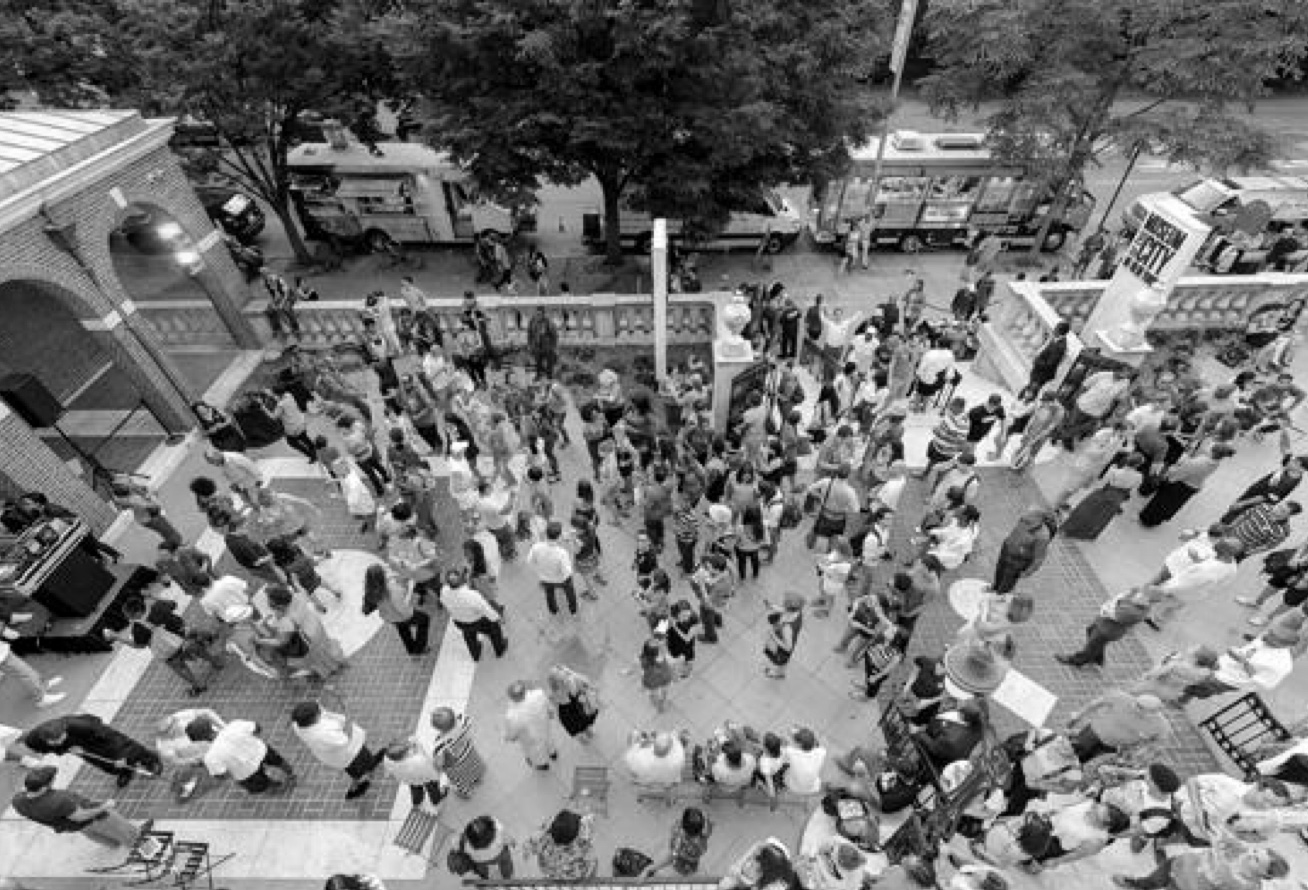Activist Theater
An Activist Theater
1930-1945

Back to Past Exhibitions
On February 21, 1934, John Wexley’s drama They Shall Not Die—highlighting the infamous rape charges against the “Scottsboro Boys”—premiered at the Royale Theatre on West 45th Street. With its condemnation of southern racism and injustice, the play helped usher in a new era on the Broadway stage.
Art and politics in New York have long gone hand in hand, particularly in the 1930s. The Great Depression spurred the growth of radical movements whose members viewed art as a weapon for exposing the failures of the American political and economic systems.
Theater activists sought to use the stage to raise workers’ consciousness and to break down the traditional “wall” between performers and audiences. Playwrights and actors pioneered experimental forms of theater to confront issues such as labor exploitation, racial injustice, and the rise of fascism and Nazism in Europe. Forming new troupes or working under the auspices of the New Deal’s Federal Theatre Project (FTP), theater activists wrote plays by committee, offered discounts for workers, and performed at street rallies.
In 1939, Congress cut funding for the Federal Theatre Project. After 1945, the Cold War political climate between the United States and the Soviet Union limited expression on the New York stage. The House Un-American Activities Committee (HUAC) in Congress accused Broadway of Communist infiltration. Key New York theater figures were “blacklisted”—denied work because of their political affiliations—and several left for Europe. Yet over time, new generations of activists drew on the social concerns of New York’s Depression-era stage.
Meet the Activists
Canada Lee


Canada Lee
Lifelong New Yorker Canada Lee performed in some of the most important political plays of the 1930s, including the Federal Theatre Project’s interracial drama Stevedore (1934) and the all-black production of Macbeth (1936). A civil rights activist involved in housing and labor movements, he died in 1952, shortly before he was due to appear before the House Un-American Activities Committee (HUAC) for alleged Communist affiliations. Here he plays David Bennett in On Whitman Avenue (1946).
Image Info: Lucas-Pritchard, 1946, Museum of the City of New York, The John Bennewitz Collection, Gift of John Bennewitz, 80.103.2336.
Rose McClendon


Rose McClendon
In 1935, Rose McClendon helped mastermind and co-direct the Federal Theatre Project’s Harlem Unit and co-founded the Negro People’s Theatre. After studying drama in New York, McClendon joined Langston Hughes, Dick Campbell, and others seeking to create a socially engaged form of African-American drama during the Depression.
Image Info: Nicholas Ház, 1927, Museum of the City of New York, Gift of Edward Fenton, 52.248.52.
Hallie Flanagan


Hallie Flanagan
Hallie Flanagan was the national director of the Federal Theatre Project. The Project employed jobless playwrights, actors, and directors, including, as of 1936, over 9,000 employees coast to coast and more than 4,000 in New York alone. Administered from Washington, D.C., the Federal Theatre Project produced hundreds of plays, both new and classic, across the country from 1935 until 1939, when Congress eliminated its funding.
Image Info: Photographer unknown, 1939, Museum of the City of New York, Theater Collection, F2012.50.2.
Objects & Images
Poster For John Wexley’s "They Shall Not Die"


Poster For John Wexley’s "They Shall Not Die"
John Wexley’s They Shall Not Die, produced at the Royale Theatre on West 45th by the Theatre Guild in 1934, was a response to the 1931 case of the “Scottsboro Boys,” nine African-American teenagers arrested for allegedly raping two white women in Alabama. The eight defendants sentenced to death were not executed, but five of them served prison sentences even though the rape charge was discredited. Although They Shall Not Die originally ran for only 62 performances, the play helped usher in a new era on the Broadway stage.
Image Info: Theatre Guild, 1934, Museum of the City of New York, Gift of the Artcraft Lithographic & Printing Co., 68.75.29.
Production Photograph From "They Shall Not Die"


Production Photograph From "They Shall Not Die"
The Scottsboro case became a focal point for civil rights and Communist Party activists in New York; like them, the play denounced the racism of the southern criminal justice system. Critic Burns Mantle called They Shall Not Die a "propaganda play," adding that it "suffers from … overstatement." Nevertheless, he allowed that the play was "devoted to an unadulterated and brutalized realism."
Image Info: Vandamm Studio©The New York Public Library, 1934, Museum of the City of New York, Collection on Broadway Productions, F2011.41.51.
Audience Survey Questionnaire For "It Can't Happen Here"


Audience Survey Questionnaire For "It Can't Happen Here"
A questionnaire circulated among audience members after a performance was one way that the Federal Theatre Project invited community input and reaction to its work. FTP artists aimed in this way to create a more authentically “democratic” American theatre.
Image Info: Federal Theatre Project, 1936, Museum of the City of New York, Collection on Broadway Productions, F2011.41.60.
The Group Theatre Presents "Awake And Sing!" By Clifford Odets


The Group Theatre Presents "Awake And Sing!" By Clifford Odets
Clifford Odets’s Awake and Sing!, produced by the Group Theatre at the Belasco Theatre in Manhattan in 1935, dramatized the generational conflict in a Bronx Jewish family coping with the Depression. Like Odets’s other dramas of the 1930s, including Waiting for Lefty, the play reflected the playwright’s interest in socialism and communism, his fascination with street talk, and an emphasis on character development rather than plot.
Image Info: 1935, Museum of the City of New York, Collection on Broadway Productions, F2011.41.53.
Production Photograph From "Awake And Sing!"


Production Photograph From "Awake And Sing!"
Before the end of 1935, Awake and Sing! had been produced not only in New York, but also in Baltimore, Chicago, Cleveland, and Newark, in Hungarian and Yiddish as well as in English. By the time the Group Theatre itself revived the play in 1939, it had become what its director, Harold Clurman, called “an honored classic.”
Image Info: Vandamm Studio©The New York Public Library, 1935, Museum of the City of New York, Gift of Harold Friedlander, 68.80.3058.
Flyer For "The Cradle Will Rock"


Flyer For "The Cradle Will Rock"
Marc Blitzstein’s musical The Cradle Will Rock, directed by Orson Welles for the Federal Theatre Project, focused on a steel strike in a fictional Midwestern city. Just before the first preview performance in June 1937, federal officials padlocked the Maxine Elliott Theatre on 39th Street and Broadway. Though it was ostensibly closed because of budget cuts, many suspected that the play’s leftist politics were the true cause. The cast lost access to props and costumes, which were government property. The show ultimately ran for 108 performances in 1938, and it has been repeatedly restaged.
Image Info: Federal Theatre Project, 1937, Museum of the City of New York, Collection on Broadway Productions, F2011.41.58.
Audience Watching "The First Performance Of The Cradle Will Rock"


Audience Watching "The First Performance Of The Cradle Will Rock"
After being locked out of the original venue for The Cradle Will Rock by federal authorities, director Orson Welles, composer Marc Blitzstein, and producer John Houseman rented the nearby Venice Theatre, filled the house with a large audience, and proceeded with the premiere on June 17th, 1937. Blitzstein played piano on a bare stage and cast members sang their parts from the audience to avoid repercussions from their unions and the WPA for appearing “onstage.”
Image Info: Friedman-Abeles, 1937, ©The New York Public Library for the Performing Arts.
Production Photograph From "One-third Of A Nation"


Production Photograph From "One-third Of A Nation"
Arthur Arent’s One-Third of a Nation was produced by the Federal Theatre Project’s Living Newspaper Unit, which used innovative techniques to grapple with contemporary social issues. “I see one-third of a nation ill-housed, ill-clad, ill-nourished,” President Roosevelt had said in his second inaugural address, and his phrase helped to inspire Arent’s play. Opening at the Adelphi Theatre in January 1938, the play showed the misery of tenement conditions and called on the federal government to intervene and build low-cost public housing.
Image Info: 1938, Courtesy Federal Theatre Project Collection, Music Division, Library of Congress, 068.00.00.
The Living Newspaper


The Living Newspaper
The Living Newspaper Unit’s left-leaning politics aroused the concern of conservative congressmen. In 1938, the new House Un-American Activities Committee (HUAC) investigated the allegedly “subversive” nature of Living Newspaper productions. Although One-Third of a Nation ran for 237 performances on Broadway, in July 1939, Congress closed down the Federal Theatre Project and the New York Living Newspaper Unit.
Image Info: January 17, 1938, Museum of the City of New York, Collection on Broadway Productions, F2011.41.70.
Key Events
| Global | Year | Local |
|---|---|---|
| Bolshevik Revolution makes Russia the world’s first Communist state | 1917 | |
| Communist Party of America and Communist Labor Party of America are founded | 1919 | |
| Stock market crash ushers in the Great Depression | 1929 | |
| 1931 | The Group Theatre is founded in New York | |
| Franklin D. Roosevelt is elected president | 1932 | |
|
Communists announce that the “Popular Front” will create alliances with liberals Federal Theater Project (FTP) begins |
1935 | |
| 1937 | Federal government shuts down the politically-minded production of "The Cradle Will Rock" in New York |


